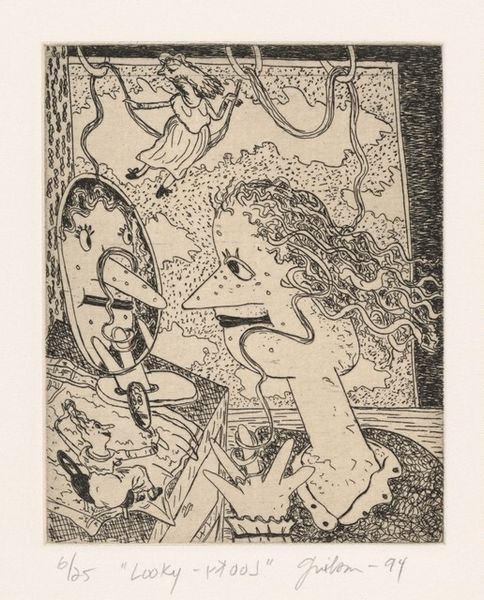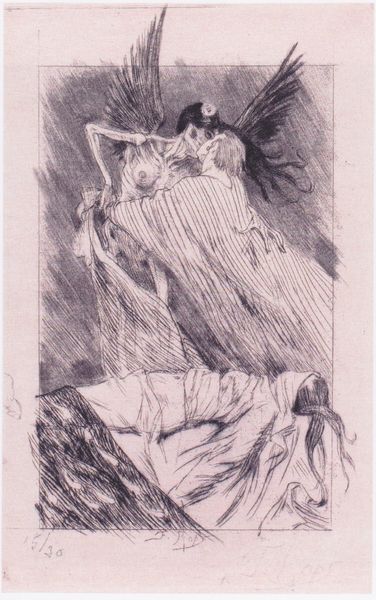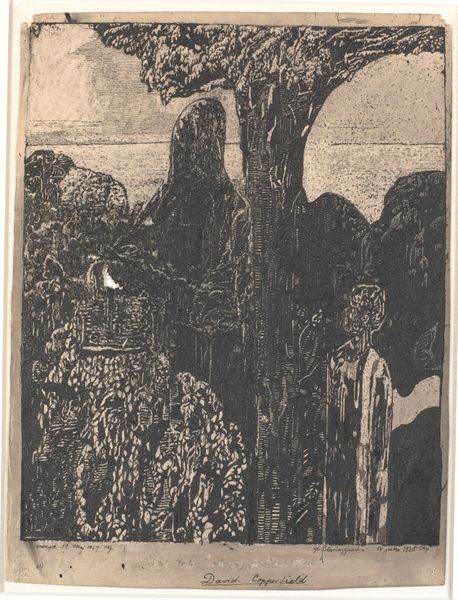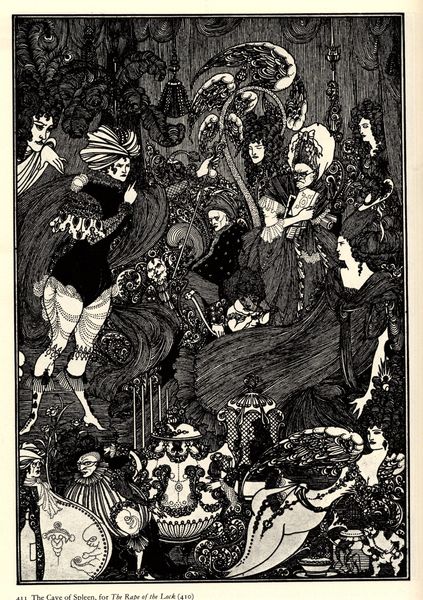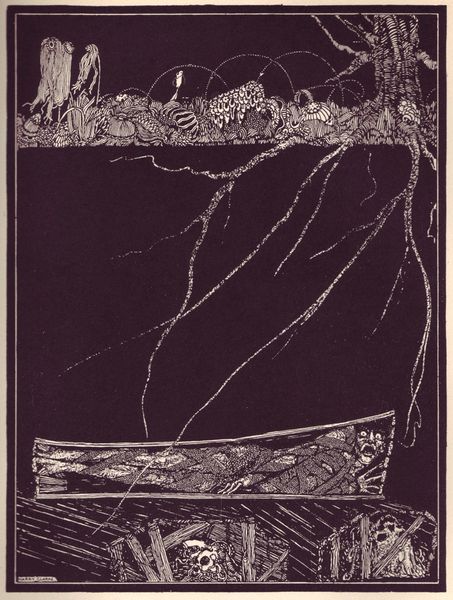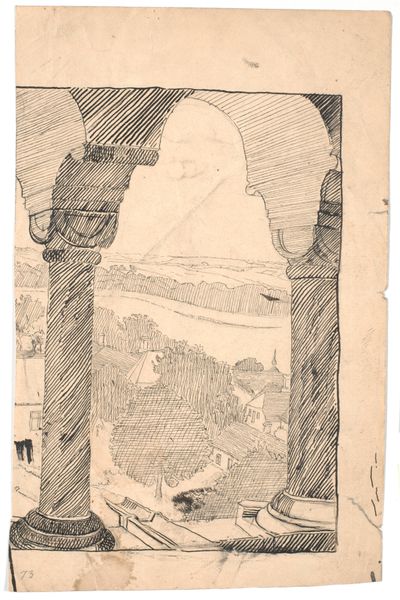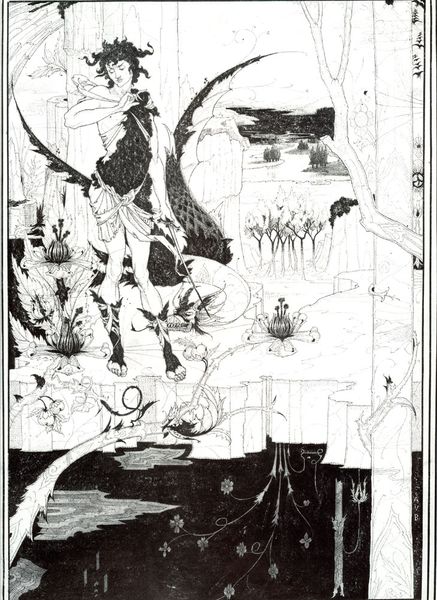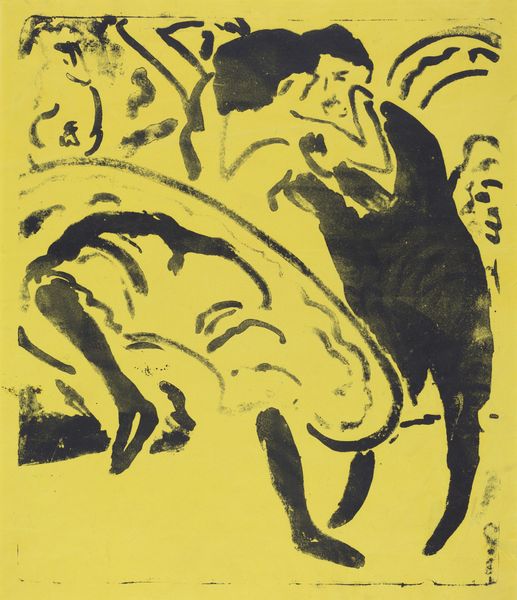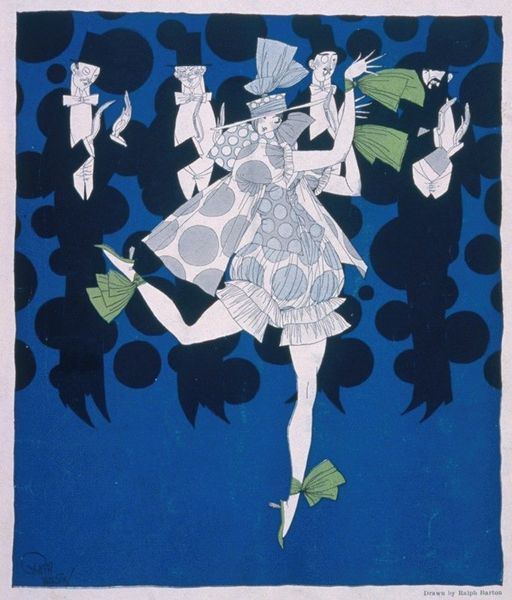
Dimensions: 55 x 46 cm
Copyright: Public domain
Curator: Georges Seurat’s “Study for ‘The Circus’,” created in 1891, is a watercolor preparatory piece housed at the Musée d’Orsay. What are your initial impressions? Editor: Well, it’s interesting, isn’t it? Very fragmented and delicate. It feels tentative, like a captured breath. I'm struck by how the materials, primarily watercolor, give the scene an ephemeral quality. It makes me wonder about the working conditions that would privilege experimentation like this. Curator: The incompleteness is intriguing. Circus imagery, historically, holds duality—the promise of wonder with an undercurrent of melancholy. Consider the color palette. Seurat used muted blues and yellows with dashes of brighter orange. Editor: Yes, there's almost a discomfort that you've named. And look closely at the ground. I find the controlled application of paint here—each dot—almost obsessively regimented, considering the lightness of the chosen materials and visual theme. One begins to wonder about the working process and about whether he employed studio assistants at any stage to help in filling in the visual ground. It seems too regular, too uniform, even for an artist of the avant-garde. Curator: Exactly. The figures, though minimally rendered, show human yearning. They look for ascension; see the acrobat's extended reach toward an ambiguous sky. Notice the audience reduced to mere forms: detached observers within the human spectacle. Editor: It almost anticipates animation. The production elements really point to a new era in art and design. There’s definitely a proto-digital aesthetic sensibility at work here with its separation of tones. Seurat prefigures many modern print techniques, I find. Curator: Absolutely. Seurat often evokes both classical ideals and modern unease. This piece distills both, creating lasting resonance. What's more fascinating to you now that we discussed this artwork, would you say? Editor: For me it has to be about the relationship between its provisional aspect as study for a larger work and its self contained power as image, I really want to think more about the circumstances of its making now that we've considered Seurat's material process a bit more carefully. Thank you for sharing your insights about it!
Comments
No comments
Be the first to comment and join the conversation on the ultimate creative platform.
